Civil Rights / Cold War
Other Protests
When President John Kennedy came into office in 1961, civil rights activists were looking for new ways to use their techniques of passive resistance.
Kennedy, who is now known for his support of civil rights, was at first hesitant to push the issue. He was focused on the Cold War. Kennedy also needed the votes of southern congressmen to pass his bills.
The next step for the movement was the Freedom Rides to force southern states to honor a Supreme Court decision desegregating interstate bus travel. At each bus station, the riders would get off the bus and attempt to enter "whites only" waiting rooms at the bus stations.
The riders expected to be received with defiance and violence, and they were. Each episode of violence received nationwide newspaper and television -cover-age. This put pressure on the federal government to intervene.
The riders expected to be received with defiance and violence, and they were. Each episode of violence received nationwide newspaper and television -cover-age. This put pressure on the federal government to intervene.
The Freedom Rides would set the pattern for the next five years. Civil rights activists would go to the most dangerous parts of the country and conduct non-violent protests. They were determined to make the American government not only protect them, but also to change laws.
This practice of going into dangerous places cost several people their lives. It culminated in a sanitation workers strike in Memphis where Dr. Martin Luther King, Jr. was killed.
Other African Americans worked for voting rights and school desegregation. John and Viola McFerrin of Fayette County worked in both areas. John participated in the black voter registration project which resulted in the famous "Tent City," while Viola worked to send her children to integrated schools so they could get the best education.
Read more about Ernest Withers, a Memphis photographer who photographed many of the Civil Rights events.
Other African Americans worked for voting rights and school desegregation. John and Viola McFerrin of Fayette County worked in both areas. John participated in the black voter registration project which resulted in the famous "Tent City," while Viola worked to send her children to integrated schools so they could get the best education.
Read more about Ernest Withers, a Memphis photographer who photographed many of the Civil Rights events.
Picture Credits:
- Photograph of three young women holding signs which say "Union Justice Now!" This photograph was taken during the Memphis Sanitation workers strike in 1968. University of Memphis Special Collections
- Photograph of an African American family living in the tent city constructed for black tenant farmers who were thrown out of their homes when they tried to register to vote in Fayette and Haywood County in 1960. Photograph by Ernest Withers. Used with permission of Panopticon Galleries, Ernest Withers Collection. This photograph cannot be reproduced without their permission.
- Dr. Martin Luther King, Jr., speaks at the Mason Temple in Memphis on April 3, 1968, giving his last speech. He was shot and killed the next day. University of Memphis Special Collections
- Photograph of Tennessee National Guard soldiers protecting the State Capitol building in Nashville. Nashville Public Library, Special Collections Division, Nashville Banner Archives
-
Participants in a rally clap and chat in this photograph taken in Memphis in April 1968. The signs call for "Union Justice," "Honor King: End Racism." This rally was held after Dr. Martin Luther King Jr.'s death. University of Memphis Special Collection
- A photograph of protesters walking Memphis streets in 1963. The signs say "Jim Crow Must Go." University of Memphis Special Collection
- A young African American woman holds a shopping boycott sign which reads "We just can't shop on an empty stomach". The photograph was taken in Chattanooga in the early 1960s. Tennessee Historical Society Picture Collection. Tennessee State Library and Archives
Civil Rights / Cold War >> Civil Rights Movement >> Other Protests >>
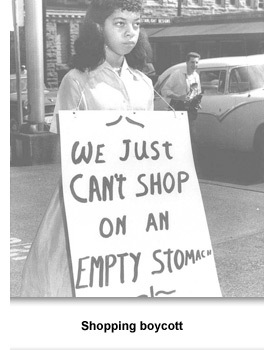
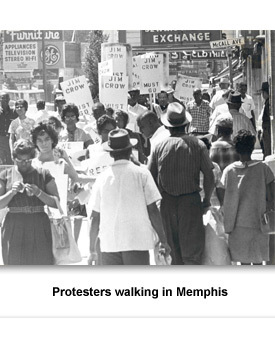
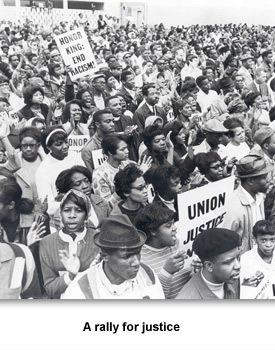
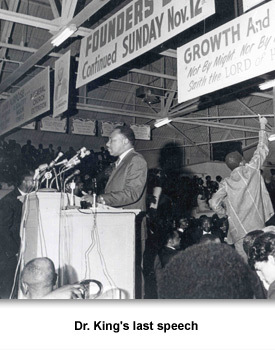
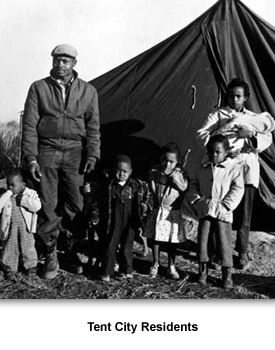
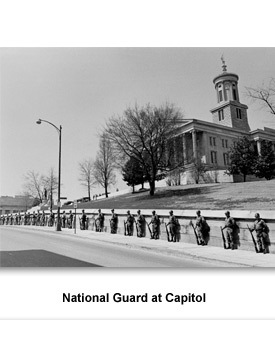
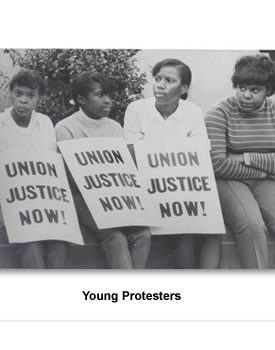
 Sponsored by: National Endowment for the Humanities
Sponsored by: National Endowment for the Humanities